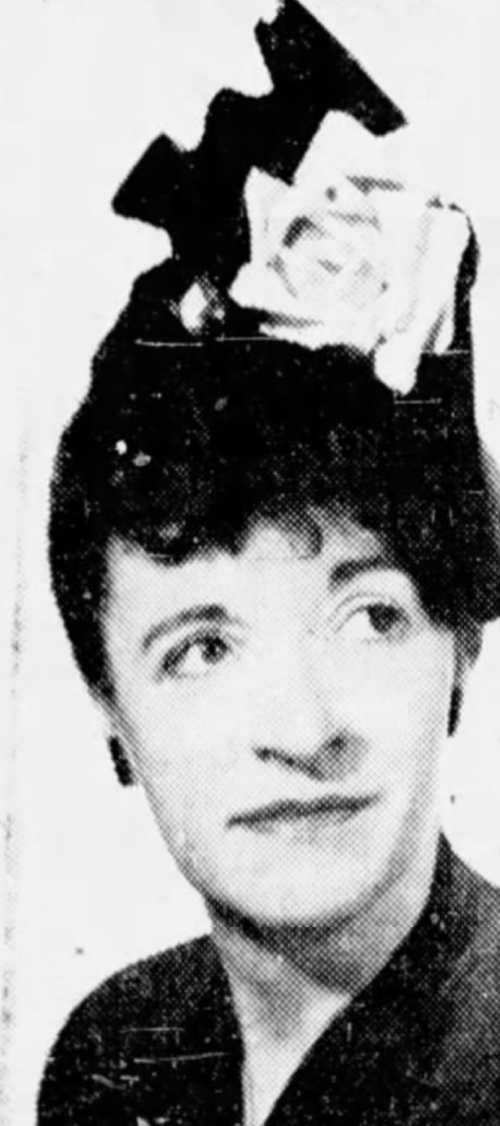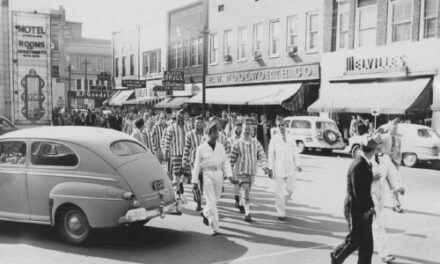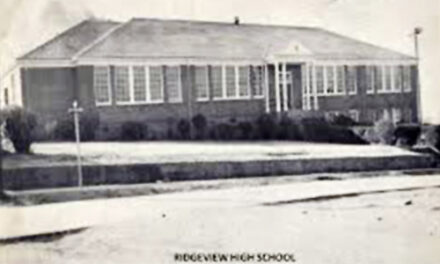
In the early days, the business of furniture had been a man’s game. In western North Carolina, white men started factories and were the sole deciders of what the market wanted. They felt they knew what would sell, though they acknowledged that many choices of decor were the prerogative of women. Still, their choices of design and form dictated selection. That is until Helen Kelly came to town.

Helen Kelly at the time of her arrival in western North Carolina.
Ideas about a lot of things began to change after World War II. For the second time during a world conflict, women filled factories to replace men marching off to war. However, after 1945 many women were not content to go back home, as they had done after the First World War. Some stayed on the job, either out of necessity as the primary bread winner or as a second income. That was mostly on the factory floor as manual laborers. Decisions about the lines offered remained the domain of men.
It was never really Helen Kelly’s intention to shake up the furniture business. She graduated from (Case) Western Reserve University in Ohio, planning to become a teacher. During a summer vacation she got bored and began a job in a department store. The furniture for sale there piqued her interest. As she told it, “the furniture floor had only one section head – so, I relieved him when he took his lunch hour. After a short time he asked me to join his department.” She accepted “despite the fact that I knew nothing about furniture, woods or fabrics,” she said. Quickly, she “learned to love it.”
From there, she mixed her education and her interest in furniture. A college-trained writer, she began authoring articles for magazines like Better Homes and Gardens, House Beautiful, and House and Garden, where she became merchandising editor. That’s when she learned about how the furniture business worked. Her pen was brutally honest about what factories were churning out. In one sentence she damned just about every piece of furniture on the market. She said, “despite the fact there is a lot of bad modern furniture, it is time we turned from 18th to the 20th century pieces,” meaning she didn’t like traditional early American lines any better than the style we now call Mid-Century Modern.
She was even harder on the offerings originating in the South. “We heard of Southern hospitality and famed Southern cooking and found food in southern restaurants and hotels the worst we’d ever tasted,” she opined. She called the South “a stage with a backdrop of beautiful women in romantic gowns, courtly gentlemen who played and worked hard, white pillared plantation houses, velvety green lawns, magnificent magnolia trees, and gardens riotous with color. Sharp and bitter against that backdrop set the shabby shanties which mark the North-South highways.” She confessed to the national market that everything they heard about the South was true, both good and bad. Admitting the borax tradition of southern furniture, she agreed that “in the majority of Southern stores we found only the cheapest kind of bad design crowded together so closely that you couldn’t see quite how bad it really was.”
Her’s was a fresh voice and it was harsh.
She saw a way out though, saying “after all, our lives have changed. A truly creative person, you know, designs things for his time and life and people.”
That’s when she decided to take a job at the newly formed Henredon Furniture, Morganton’s newest. Two years after a quartet of men used their own names (T. Henry Wilson, Ralph Edwards, Donnell Van Noppen, with Sterling Collett left out of the name game) to form the company, Helen Kelly arrived. Next week, her impact.








